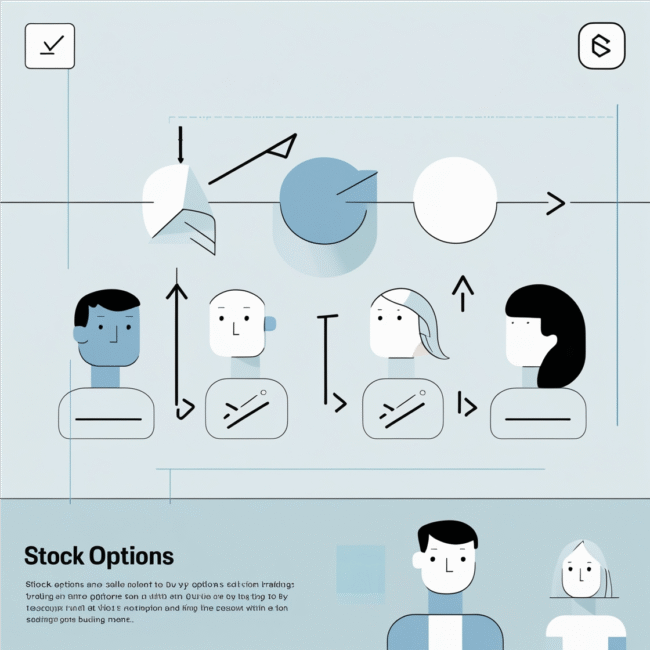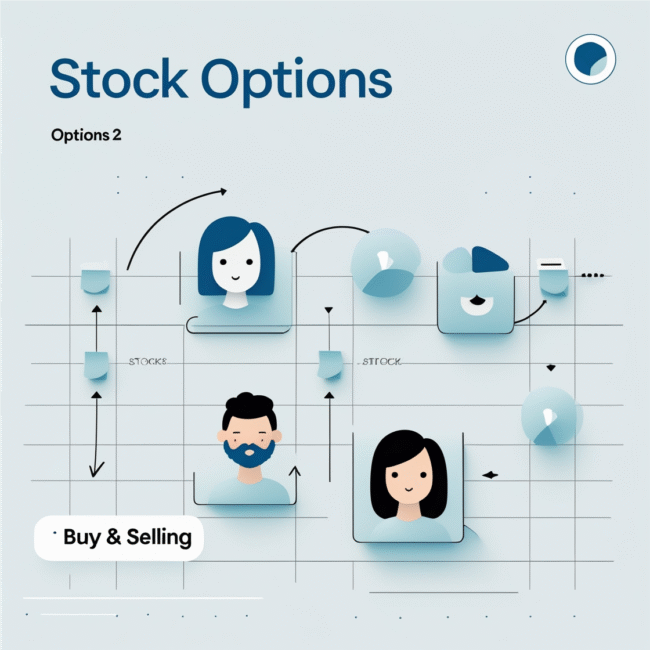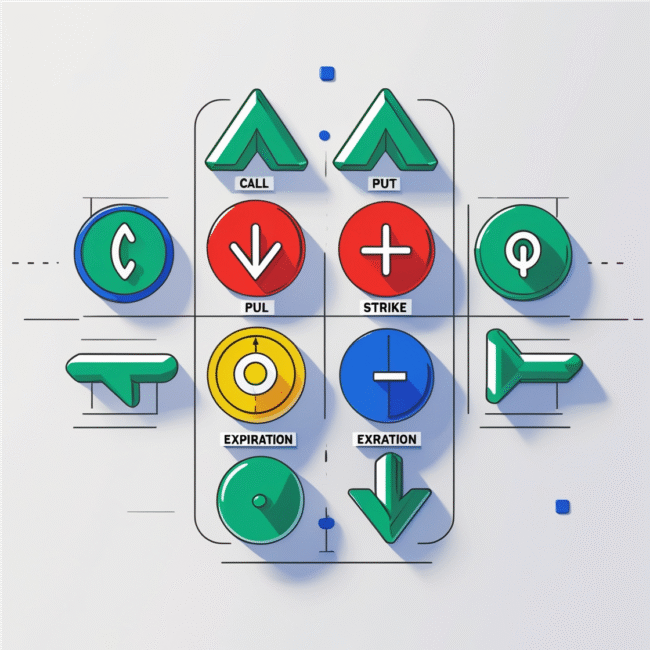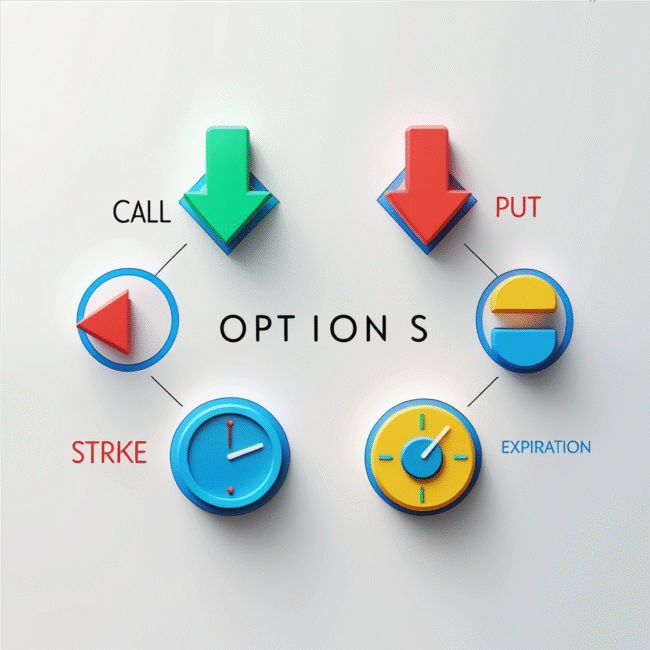Investing in the stock market is a great way to build wealth, but it can sometimes feel overwhelming, especially when you encounter complex instr

Investing in the stock market is a great way to build wealth, but it can sometimes feel overwhelming, especially when you encounter complex instruments like options. Unlike buying and selling stocks, options give you the right—but not the obligation—to buy or sell a stock at a set price before a specific date. This flexibility makes options a powerful tool for investors, offering opportunities for growth, income, and protection.
However, options can seem intimidating if you’re new to the concept. This article will break down everything you need to know about options in easy-to-understand terms. By the end, you’ll feel confident about what options are, how they work, and how you can start using them in your investment strategy.
1. What Are Options?
Options are contracts, a type of derivative instrument, meaning their value depends on the value of another asset—in this case, a stock or sometimes other financial products like ETFs or indexes.
When you buy an option, you’re buying the right to buy or sell a stock at a predetermined price (called the strike price) within a limited timeframe (until the expiration date). You pay a fee upfront for this right, called the premium.
Why Use Options?
Options allow investors to speculate on stock movements, generate income, or hedge against potential losses. For example, if you think a stock will go up, buying a call option is a cheaper way to benefit from that movement than buying the stock outright. Conversely, if you want protection against a drop in your stock’s value, buying a put option can act like insurance.
2. Call Options vs. Put Options
Understanding the difference between calls and puts is the foundation of options trading.
- Call Options: Buying a call gives you the right to buy a stock at the strike price before expiration. You’d buy calls if you expect the stock’s price to rise.
- Put Options: Buying a put gives you the right to sell a stock at the strike price before expiration. Puts are useful if you expect the stock’s price to fall.
3. How Options Work: Basic Examples
Let’s explore how options function in different market conditions using practical examples.

Scenario 1: Stock Price Goes Up — Call Option Profits
You buy a call option on Stock ABC with a strike price of $50 for a premium of $3. The stock is currently trading at $48.
- If the stock rises to $60 before expiration, your option is in the money.
- You exercise your right to buy at $50 and sell immediately at $60, making a $10 profit per share.
- After subtracting the $3 premium, your net profit is $7 per share.
- Since each contract controls 100 shares, that’s $700 total profit.
Scenario 2: Stock Price Goes Down — Put Option Profits

You buy a put option on Stock DEF with a strike price of $30 for a premium of $2. The stock currently trades at $35.
- If the stock falls to $20, your put option becomes very valuable.
- You can sell at $30, even though the market price is $20.
- Your profit per share is $10 minus the $2 premium, totaling $8 per share.
- For 100 shares, this equates to $800 profit.
Scenario 3: Stock Price Does Not Move Much — Loss Limited to Premium
Options lose value over time (called time decay). If the stock price remains close to the strike price or moves in the wrong direction, the option may expire worthless. Your maximum loss is limited to the premium you paid, which can be seen as the cost of the potential opportunity.
4. Key Terms in Options Trading
Understanding options terminology is crucial to navigating the market confidently.
Strike Price
This is the fixed price at which you can buy (call) or sell (put) the underlying stock. The strike price is set when the option contract is created.
Expiration Date
Options don’t last forever. Each option contract has an expiration date — the last day the option can be exercised. After this, the contract becomes worthless.
Premium
The cost of buying an option. This price fluctuates based on the underlying stock price, time until expiration, volatility, and other factors.


In the Money (ITM)
An option is in the money when exercising it is profitable:
- For calls: stock price is above the strike price.
- For puts: stock price is below the strike price.
Out of the Money (OTM)
When exercising the option would not be profitable:
- Calls: stock price is below the strike price.
- Puts: stock price is above the strike price.
At the Money (ATM)
When the stock price equals the strike price.
Exercise
When the option holder uses their right to buy or sell the stock at the strike price.
Assignment
If you sell options (called writing), you may be assigned, meaning you are obligated to fulfill the contract terms (buy or sell stock) if the buyer exercises.
Options Chain
A table showing all available options for a stock, listing different strike prices, expiration dates, and premiums.
5. Why Trade Options? Benefits and Risks
Benefits of Trading Options
- Leverage: Options allow you to control a larger amount of stock with less capital. For example, buying 1 call option contract gives control over 100 shares.
- Flexibility: You can profit in rising, falling, or sideways markets.
- Income Generation: You can write options (sell options contracts) and earn premiums as income.
- Risk Management: Options can hedge against losses in your stock portfolio.
- Limited Risk: When buying options, your maximum loss is the premium paid.

Risks of Trading Options
- Loss of Entire Premium: If the option expires worthless, you lose all the money spent on the premium.
- Complexity: Options involve multiple moving parts like volatility, time decay, and strike prices.
- Time Decay: Options lose value as expiration approaches, especially if the stock doesn’t move in your favor.
- Unlimited Risk When Writing Options: Selling options without owning the underlying stock (naked options) can expose you to significant losses.
- Psychological Pressure: The fast pace and complexity can lead to poor decision-making if unprepared.
6. Simple Strategies for Beginners

1. Buying Calls
- Objective: Profit from rising stock prices.
- Risk: Limited to the premium.
- Reward: Potentially unlimited if the stock soars.
- Example: Buy a call option on Tesla if you think it will jump in price.
2. Buying Puts
- Objective: Profit from falling stock prices or protect holdings.
- Risk: Limited to the premium.
- Reward: Profit increases as the stock price falls.
- Example: Buy puts on a stock you own as insurance against a drop.
3. Covered Calls
- How it works: Own 100 shares of a stock and sell a call option against those shares.
- Objective: Generate income from the premium.
- Risk: Limited downside risk if you own the stock; risk that stock is called away if price rises.
- Benefit: Provides extra income and some downside protection.
4. Cash-Secured Puts
- How it works: Sell put options while holding enough cash to buy the stock if assigned.
- Objective: Generate income or buy a stock at a discount.
- Risk: You may have to buy the stock at the strike price if assigned.
- Benefit: Earn premiums while waiting for stock price to drop.
7. Common Mistakes to Avoid
- Trading Without Education: Jumping into options without understanding can be costly.
- Ignoring Expiration Dates: Options lose value over time, so timing is critical.
- Over-Leveraging: Using too much capital or too many contracts can lead to significant losses.
- No Plan: Entering trades without a clear exit strategy.
- Confusing Buying vs. Selling Options: Selling options can lead to unlimited losses if done improperly.
- Ignoring Volatility: Volatility impacts option prices significantly and should be monitored.
8. How to Get Started with Options Trading

Step 1: Open a Brokerage Account
Choose a broker that offers options trading with educational resources and reasonable commissions.
Step 2: Get Approved for Options Trading
Brokerages require you to apply and be approved based on your experience and financial situation.
Step 3: Educate Yourself
- Read books and online tutorials.
- Use paper trading simulators to practice without risking money.
- Follow market news and analysis.
Step 4: Start Small
Use simple strategies like buying calls or puts, and limit your capital at risk.
Step 5: Keep a Trading Journal
Track your trades, what worked, what didn’t, and learn from mistakes.
9. Useful Resources and Tools
- Options Industry Council (OIC): Great free education on options.
- Investopedia: Easy-to-understand articles and tutorials.
- Brokerage Platforms: Many offer educational videos, simulated trading, and options calculators.
- Books: “Options Made Easy” by Guy Cohen, “Trading Options for Dummies” by Joe Duarte.
- Options Calculators: To understand potential profit, loss, and breakeven points.
- Financial News Sites: Keep updated on stock movements and market trends.
10. Final Thoughts

Options trading opens up exciting possibilities for investors, but it requires patience and learning. Starting with basic concepts and simple strategies can help you build confidence and experience. Always manage risk carefully and never invest money you can’t afford to lose.
Remember: options are tools to help you meet your investing goals — whether that’s growing your wealth, generating income, or protecting your portfolio. With practice, you can master this versatile financial instrument.



COMMENTS